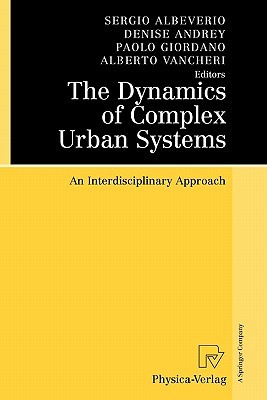
- We will send in 10–14 business days.
- Publisher: Physica Verlag
- Year: 2010
- Pages: 484
- ISBN-10: 3790825336
- ISBN-13: 9783790825336
- Format: 15.6 x 23.4 x 2.6 cm, minkšti viršeliai
- Language: English
- SAVE -10% with code: EXTRA
The Dynamics of Complex Urban Systems (e-book) (used book) | bookbook.eu
Reviews
Description
In recent years it has become increasingly clear that the dynamics of cities can be best captured by looking at them as complex systems governed by many degrees of freedom, interacting on different space and time scales in a non-linear fashion. The evolution of cities is shaped by internal factors, e. g. decisions taken by ins- tutions and individuals, external causes (international economic context) and by social development. The underlying processes can be slow or fast, acting locally or globally. At a different level, both European cities and megacities are magnets for immigrants (e. g. countries, which have major economical and political pr- lems), leading often to phenomena like marginalization or even ghettization and segregation. They are also hotbeds of economic, political and cultural activity, giving rise, among other things, to relocation and conversion of industries, - valuation of land, and development of new services. These phenomena as quali- tive changes, are opposed to purely quantitative growth processes. They are far from being fully understood, nor they are captured in validated and complete - ban models. For most of urban theory hitherto has been based on the assumption of slowly varying spatial and social structures. Only recently, these assumptions have been questioned, giving rise to models employing dissipative dynamics, s- chastic cellular automata and multi-agent models, fractal geometry, and evoluti- ary change models, and to further mathematically oriented approaches.
EXTRA 10 % discount with code: EXTRA
The promotion ends in 23d.10:15:24
The discount code is valid when purchasing from 10 €. Discounts do not stack.
- Publisher: Physica Verlag
- Year: 2010
- Pages: 484
- ISBN-10: 3790825336
- ISBN-13: 9783790825336
- Format: 15.6 x 23.4 x 2.6 cm, minkšti viršeliai
- Language: English English
In recent years it has become increasingly clear that the dynamics of cities can be best captured by looking at them as complex systems governed by many degrees of freedom, interacting on different space and time scales in a non-linear fashion. The evolution of cities is shaped by internal factors, e. g. decisions taken by ins- tutions and individuals, external causes (international economic context) and by social development. The underlying processes can be slow or fast, acting locally or globally. At a different level, both European cities and megacities are magnets for immigrants (e. g. countries, which have major economical and political pr- lems), leading often to phenomena like marginalization or even ghettization and segregation. They are also hotbeds of economic, political and cultural activity, giving rise, among other things, to relocation and conversion of industries, - valuation of land, and development of new services. These phenomena as quali- tive changes, are opposed to purely quantitative growth processes. They are far from being fully understood, nor they are captured in validated and complete - ban models. For most of urban theory hitherto has been based on the assumption of slowly varying spatial and social structures. Only recently, these assumptions have been questioned, giving rise to models employing dissipative dynamics, s- chastic cellular automata and multi-agent models, fractal geometry, and evoluti- ary change models, and to further mathematically oriented approaches.


Reviews